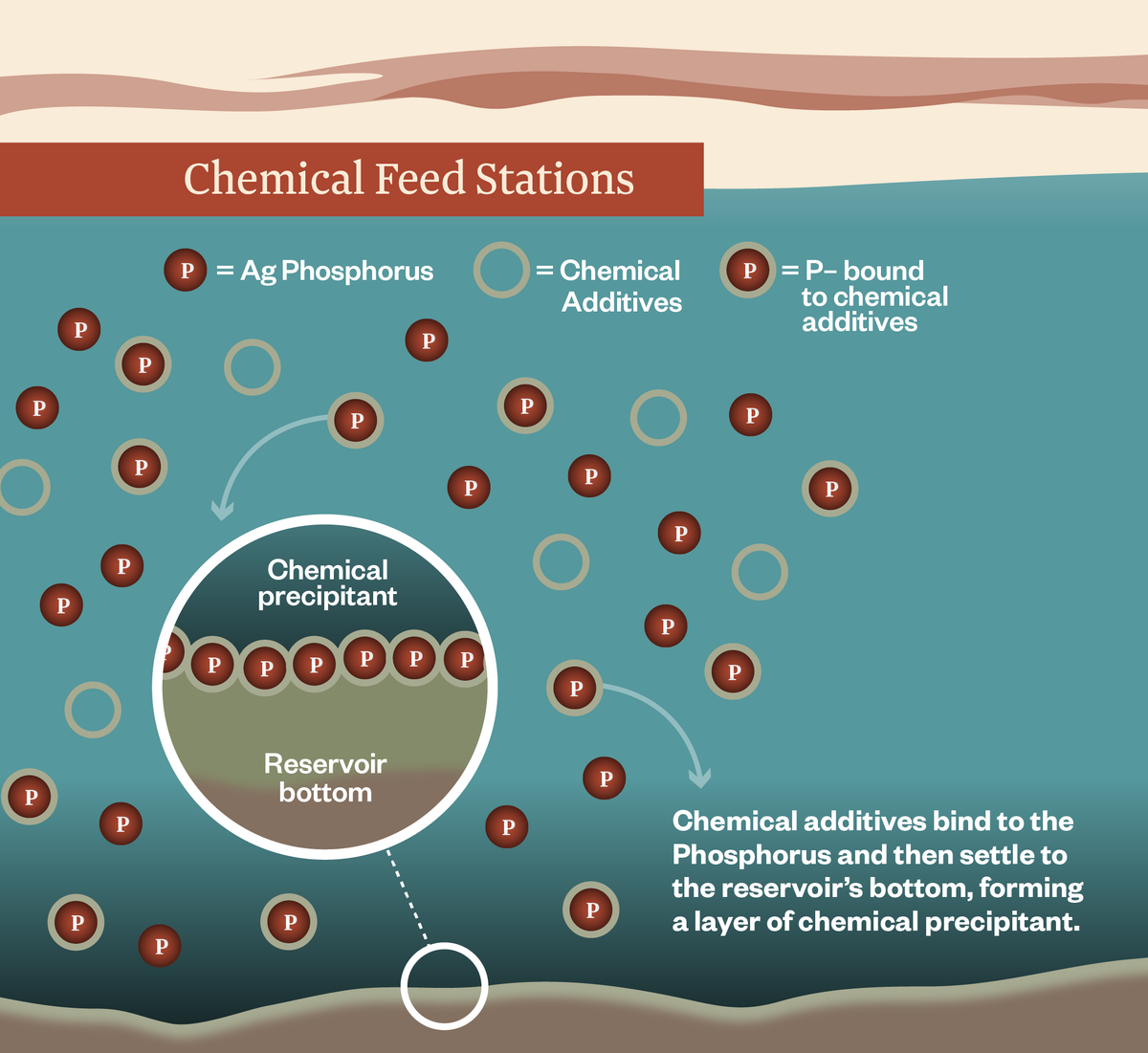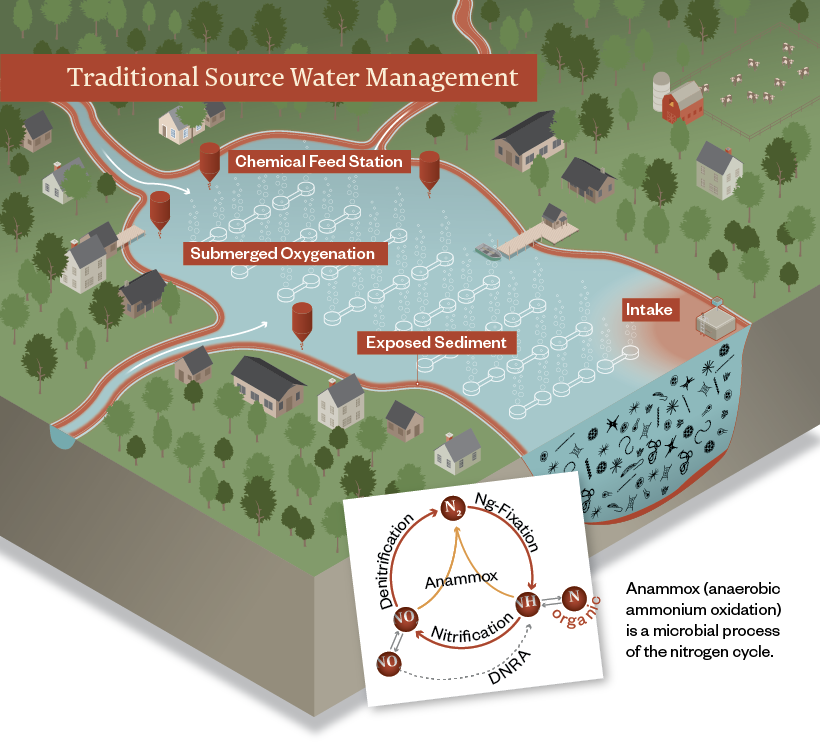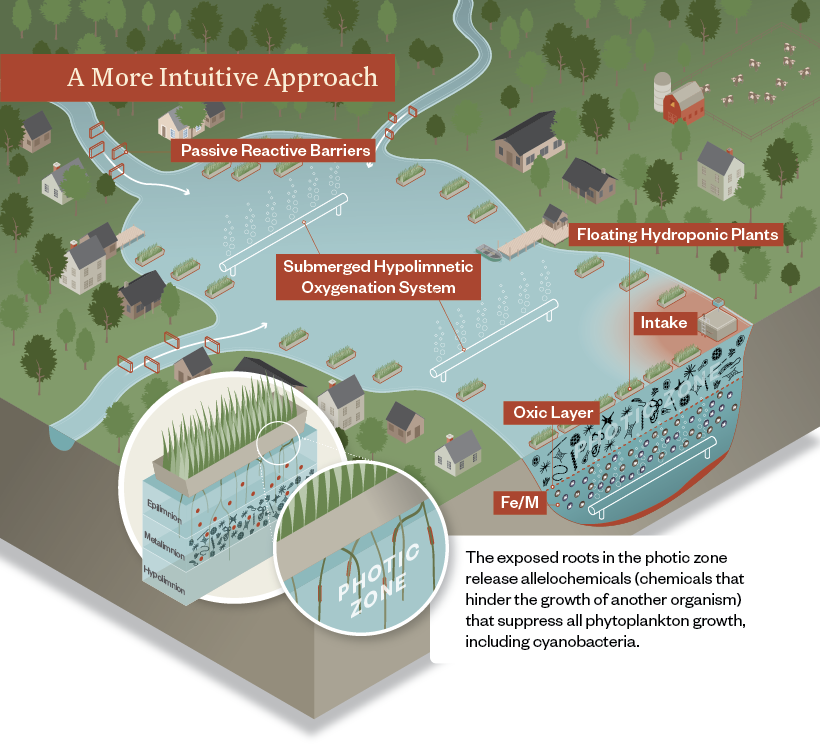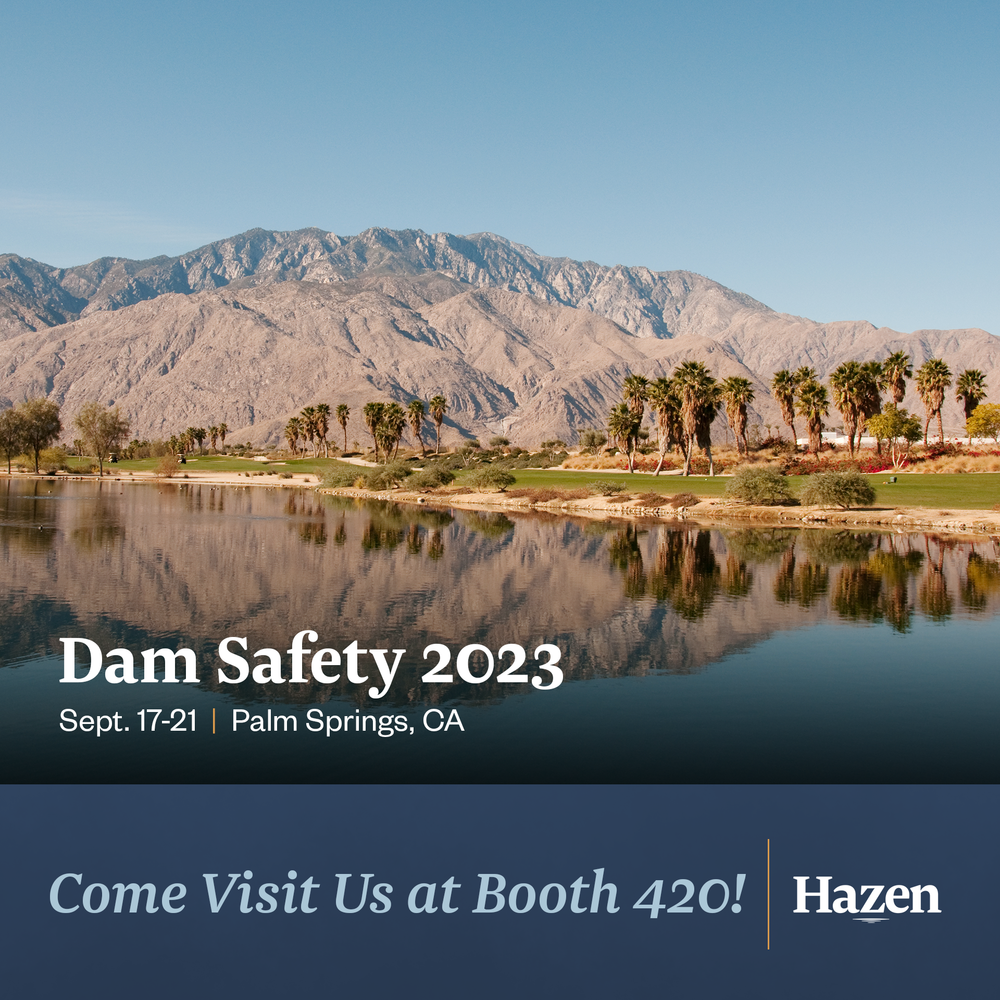Algae in Water Supply Reservoirs
Combating Growth and Increased Nutrient Loadings
Water supply reservoirs are a vital component of our nation’s water supply systems, providing storage during droughts and improving resiliency. Off stream reservoirs can also provide improvement in raw water quality through settling of suspended solids and organic matter before treatment. Recently, many reservoirs across the country have been experiencing significant water quality problems due to increased nutrient loadings and associated changes in algae production.
The most recent U.S. Environmental Protection Agency (EPA) national lakes assessment found that of the most disturbed lakes around the country, 40.5% were disturbed due to phosphorus and 34.5% for nitrogen loading.This trend has continued over the last 5 years, with water utilities encountering issues treating reservoir raw water due to elevated algae levels that produce geosmin and MIB compounds, causing taste and odor problems in drinking water.
The EPA has recognized the potential for impacts on human health associated with the cyanotoxins (Cylindrospermopsin and Microcystin) that are produced by some species of blue-green algae (cyanobacteria) and have developed health advisory concentrations for drinking water. As a result, water utilities are having to focus more attention on actively monitoring and managing their water supply reservoirs to minimize growth of these nuisances associated with blue-green algae.
In reservoir management, there are multiple approaches for oxygenation/aeration, with the most common being a free bubble plume with either a linear or circular diffusion. There are two general categories, with different objectives: hypolimnetic, which leaves the stratification intact; and destratification by mixing. Stratification isolates three environments— epilimnion, metalimnion, and hypolimnion—each with distinct characteristics.
Typically, chemical feed stations are coupled with destratification and aeration/oxygenation to help further limit nutrient cycling. Chemical feed stations attempt to suppress cyanobacteria and algae growth by inactivating additional nutrients put into the photic zone by mixing, but this does not directly suppress cyanobacteria or algae. It further ensures cyanobacteria dominance, as they are more competitive organisms than eukaryotic algae and can capitalize on briefly lived, pulse inputs of common macronutrients.

Chemical feed stations attempt to suppress cyanobacteria and algae growth by inactivating additional nutrients put into the photic zone by mixing, but this does not directly suppress cyanobacteria or algae.
The settled floc in a chemical feed station also drastically changes the biological community that resides at the sediment-water interface. The biological community adapts to the change in substrate and uses the settled floc in its metabolic processes. Research confirms phosphate solubilizing bacteria (PSB) liberates phosphate from insoluble aluminum phosphate. Current management plans that recommend chemical feed stations do not account for these changes.
Additionally, the chemical feed stations are placed just upstream of intense mixing to create a vortex, which destratifies the water column and the surrounding area. This increases temperatures in the hypolimnion, where the settled floc would reside. This is also important because ideal pH for alum treatment is between 6 and 7, and the addition of the coagulant itself reduces the population. Understanding physical and bio-chemical weathering of sediments (and minerals) and microbiology is imperative for proper source water management with minimal impact on the ecosystem.

Typical source water management consists of chemical feed stations and oxygenation/aeration with the intent of mixing and destratification. These management programs fail to restore the banks of the tributaries and the littoral zone of the source water, key factors needed to promote primary consumers and allow nutrients and energy to flow up the food chain and promote nutrient removal. The amount of oxygenation/aeration is usually excessive, and the aim is to promote aerobic respiration, which is only one segment of a metabolic pathway. This only accounts for one of the many metabolic pathways that are present at the sediment-water interface.
The intent is to promote the breakdown of decaying biomass from primary producers (typically cyano- bacteria) through aerobic respiration after glycolysis. This approach neglects numerous metabolic pathways and is especially inhibitory to the nitrogen cycle because there are key enzymes that cannot be synthesized in presence of oxygen. For example, anammox and fe-anammox, which promotes nitrogen losses from the internal cycles instead of conserving the nitrogen in the cycle as ammonia. It does not fix fundamental issues, but simply tries to work around them chemically and physically.
Water supply reservoir water quality management is a complicated process driven by biological systems that are continually reacting to changes in physical and chemical conditions. Managing these systems requires an approach that recognizes these influences and facilitates proactive responses throughout the year. Management approaches should balance the benefit and impact of oxygenation and optimize the balance by strategic spatial implementation of restoration elements.

The ecosystem and habitats are reestablished to increase biodiversity and promote nutrient removal from internal overloaded cycles by promoting nutrient and energy migration up the food chain. It also optimizes nutrient removal from the photic zone with plants, which are more competitive with cyanobacteria than green algae.

The hierarchy of the food chain is stabilized by its foundation, primary producers. Cyanobacteria are not an ideal food source, so when they govern the primary producer population the rest of the food chain is unsteady.If the primary producer population is not as nutritional, then the primary consumers are reduced. With the reduction in primary consumers, the secondary and tertiary consumer populations are unstable. When the food chain is unstable and imbalanced, nutrient cycling within the system is disrupted.
This approach attempts to reestablish a balanced ecosystem by using natural purification processes that not only mitigate cyanobacteria related issues, but also increase overall water quality, especially with respect to emerging contaminants.
There will be times when conditions require more immediate measures for algae population reduction that involve algaecide application. Any use of algaecides must be focused on the key species of concern and prescriptions developed that are based on monitoring data to ensure effective algae reduction while protecting the aquatic resources in the reservoir. These approaches are long-term measures to effectively manage water supply water quality that can and should be coupled with a broad strategy for monitoring and watershed management for reduction of overall nutrient loadings.












